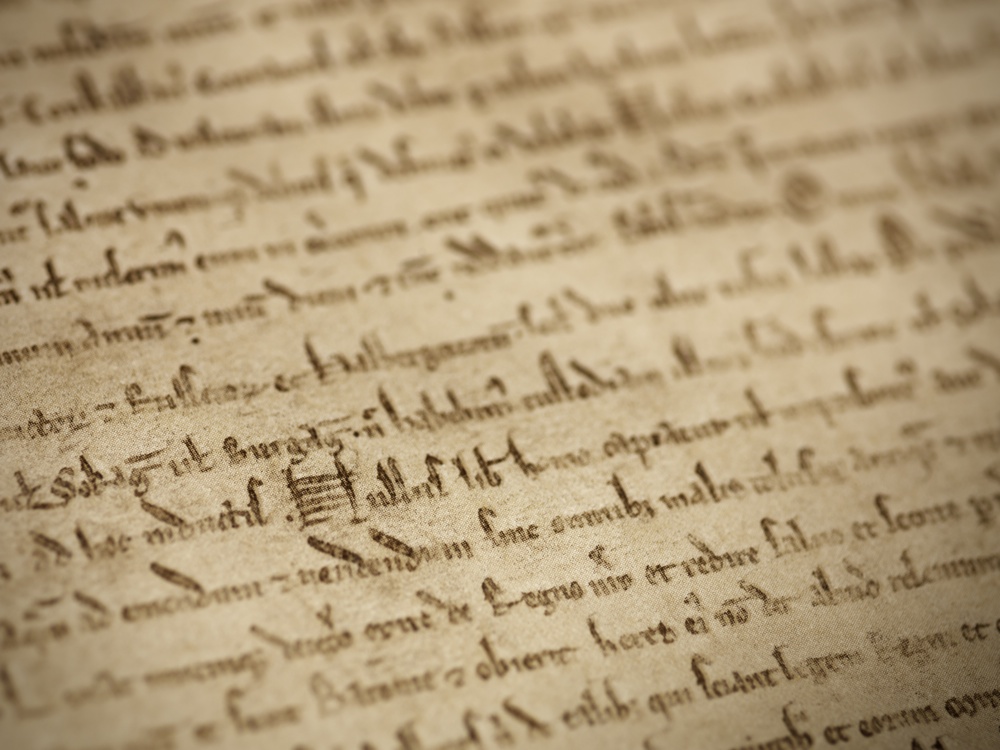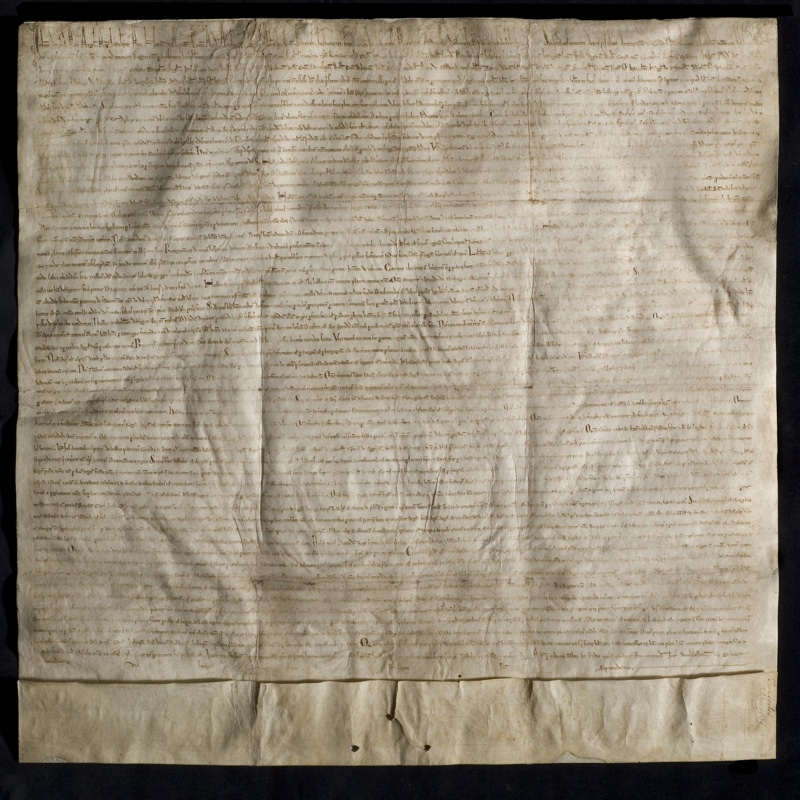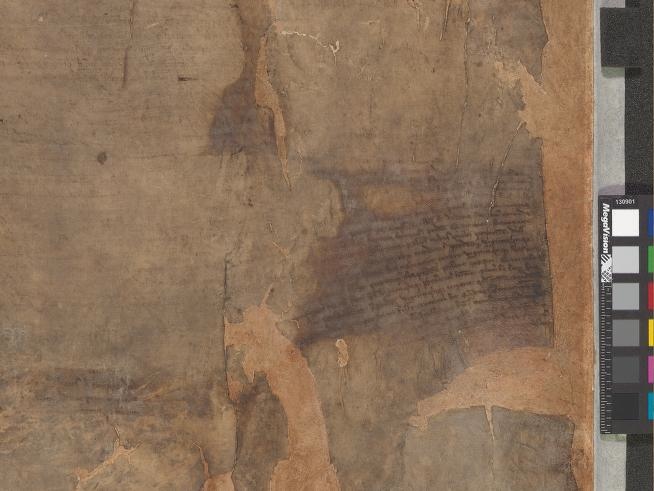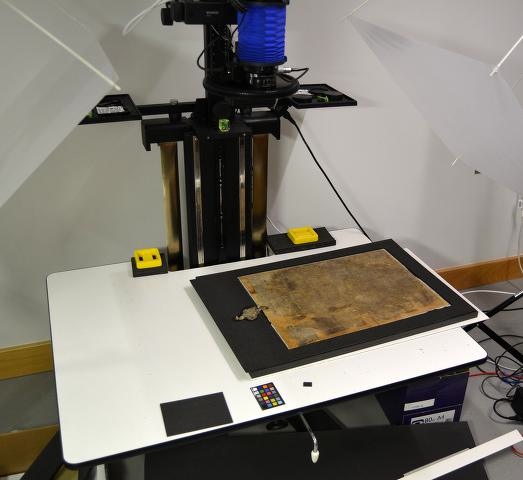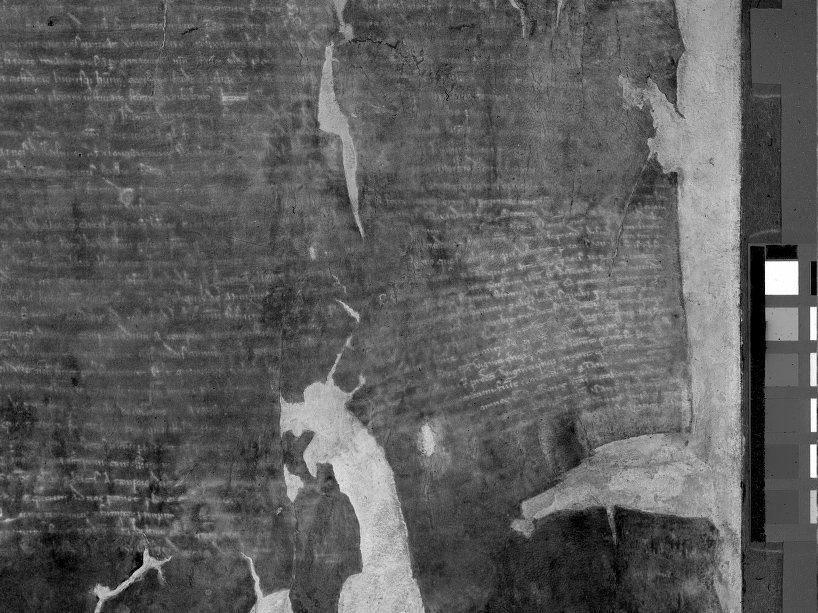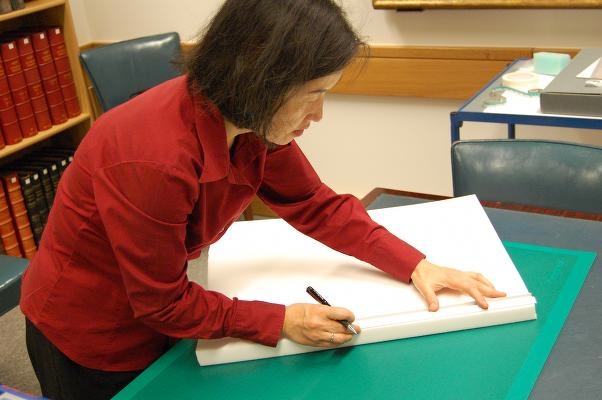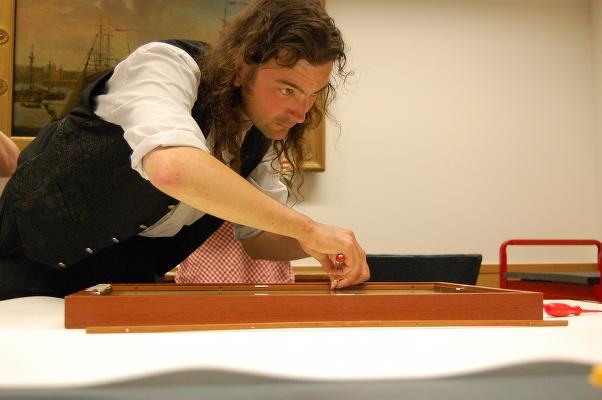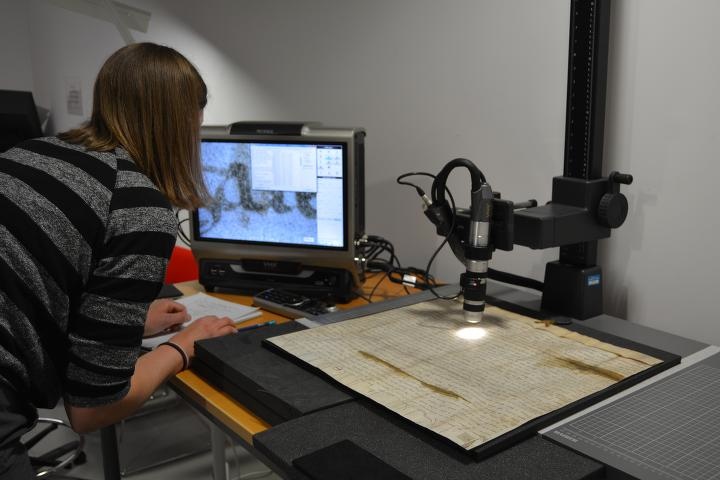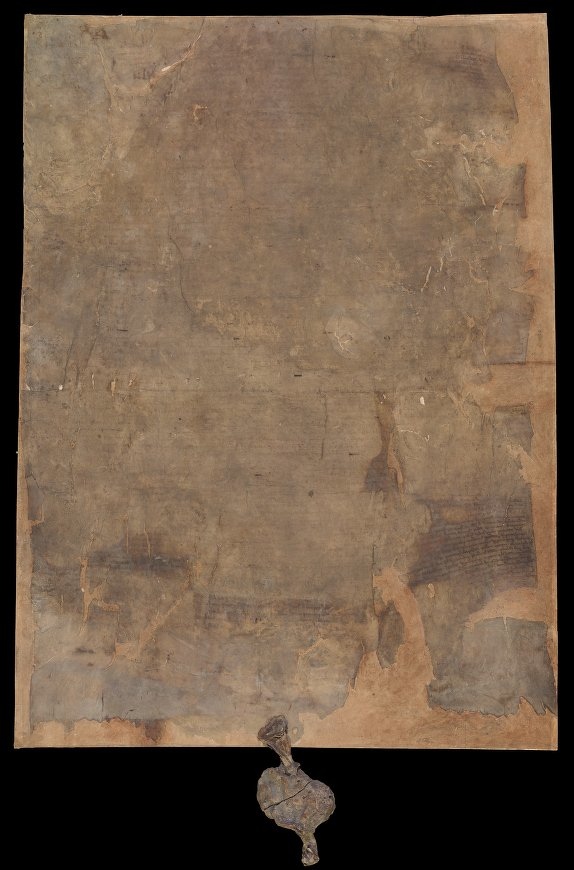Secrets of the Burnt Magna Carta Revealed (Photos)
The Magna Carta charter, written in 1215, required that the king of England, King John, cede absolute power. Four copies of the document were created at the time, one of which was badly damaged in a fire in 1731. Now, scientists have used multispectral imaging to reveal for the first time since the damage the details of both the parchment and text. Here's a look at what the researchers found. [Read full story on the Burnt Magna Carta]
Close-Up
A close-up of the Magna Carta, written in Medieval Latin. This document, penned in 1215, required King John of England to give up some of his absolute power and encoded certain rights for feudal barons, including Habeus corpus, or the right to a jury trial. The Magna Carta was a huge milestone in governance, representing the first time a king had to cede absolute power to the rule of law. (Photo Credit: Joseph Turp, Copyright British Library.)
Salisbury Magna Carta
Four copies of the Magna Carta were made and stamped with King John's seal in 1215, when the nobility banded together to limit the monarch's absolute power. This one is held at Salisbury Cathedral. Another is at Lincoln Cathedral, and the final two reside in the collection of the British Library in London. All four documents are identical in wording and text, though one of the British Library's was damaged in a fire in 1731. (Photo Credit: Ash Mills, Salisbury Cathedral)
Undamaged charter
The British Library's undamaged 1215 copy of the Magna Carta. King John's attempts to mollify the feudal barons by agreeing to the contract staved off war for only a short period. John was an unpopular king and came into conflict with the nobility over taxes (this conflict has been dramatized in many modern versions of "Robin Hood"). He submitted to the Magna Carta, but turned to the Pope for help; the Pope, in turn, nullified the document within a few months.
Get the world’s most fascinating discoveries delivered straight to your inbox.
As a result, the nobility rebelled outright, launching the First Barons' War to try to replace King John with Prince Louis of France. King John ended up bringing about the war's end by dying in 1216, and his young son Henry took the throne. The Magna Carta was reissued with Henry's name replacing John's. Though it would change in content over the decades, the document became an inspiration for the foundation of constitutional law, and parts of it directly inspired the U.S. Constitution. (Photo Credit: Joseph Turp, Copyright British Library)
Lincoln Magna Carta
The Lincoln Cathedral's copy of the 1215 Magna Carta, one of four surviving documents from the charter's first year. On Feb. 3, 2015, all four 1215 Magna Cartas will be displayed side-by-side at the British Library in London for the 800th anniversary of the sealing of the document. The public can enter a lottery for free tickets to the event through October 2014 at the British Library website. (Photo Credit: Lincoln Cathedral)
Burnt Magna Carta
The fourth of four original copies of the Magna Carta from 1215 was damaged in the Cotton Library Fire on Oct. 23, 1731. This collection belonged to Sir Robert Cotton, who died in 1631, and included manuscripts such as Beowulf and some of the earliest manuscripts of the Bible. Almost every book in the Cotton collection went up in flames, according to the British Library. The manuscripts fared better, with only 13 destroyed, but many others were damaged. Among these damaged parchments was the 1215 Magna Carta. (Photo Credit: British Library)
Imaging the Magna Carta
The "Burnt Magna Carta" is positioned for multispectral imaging. This noninvasive technique allows conservation scientists to photograph the document under a range of light conditions, including parts of the spectrum outside of human vision. The result is a series of images that can reveal more than the naked eye can see alone. (Photo Credit: British Library)
Recovering text
Using ultraviolet light, British Library scientists were able to photograph the text of the 1215 Burnt Magna Carta that is invisible to the human eye. The text is the same seen in the three undamaged versions of the charter from 1215, but has not been read since the 1731 fire. "It was actually quite a surprise that so much text was recovered," British Library imaging scientist Christina Duffy told Live Science. (Photo Credit: British Library)
Magna Carta preservation
Conservator Kumiko Matsuoka of the British Library prepares temporary housing for the Burnt Magna Carta. The document was placed in a secure frame in the 1970s and had not been removed for 40 years. In preparation for the 800-year anniversary of the sealing of the charter, British Library scientists removed the parchment and created a new, modern frame to preserve it in its current state. (Photo Credit: British Library)
Out of the frame
Conservation scientist Paul Garside carefully removes the 1970s wooden frame from the Burnt Magna Carta. The frame had degraded since the 1970s and was no longer the top-quality material needed to house such a fragile document, imaging scientist Duffy told Live Science. (Photo Credit: British Library)
Unmounting the document
Conservator Gavin Moorhead undertakes the delicate task of removing the damaged Magna Carta from its 1970s-era mounting. The materials for the new frame have been tested to ensure that they don't off-gas volatile compounds that could damage the 800-year-old manuscript, Duffy said. (Photo Credit: British Library)
Magnified Magna
Imaging scientist Christina Duffy examines a magnified section of an original Magna Carta to assess its condition. The researchers were not interested in restoring the documents, Duffy said. Instead, the goal was to preserve them and ensure they succumb to no further damage. Attempting to remove damage could end up altering the fragile charters even more. (Photo Credit: British Library)
Damaged state
A full view of the Burnt Magna Carta, one of the four surviving manuscripts from 1215. A 1731 fire damaged this copy, rendering much of the text illegible. (Photo Credit: British Library)
Scrawl marks
Under 50-fold magnification, the damage to the Burnt Magna Carta is apparent. Much of the ink has faded to nothing, leaving only a few scrawled marks of the original Latin calligraphy. Multispectral imaging can recapture much of what was lost, creating images that show what the document looked like originally in 1215. (Photo Credit: British Library)
Follow us @livescience, Facebook & Google+.

Stephanie Pappas is a contributing writer for Live Science, covering topics ranging from geoscience to archaeology to the human brain and behavior. She was previously a senior writer for Live Science but is now a freelancer based in Denver, Colorado, and regularly contributes to Scientific American and The Monitor, the monthly magazine of the American Psychological Association. Stephanie received a bachelor's degree in psychology from the University of South Carolina and a graduate certificate in science communication from the University of California, Santa Cruz.


